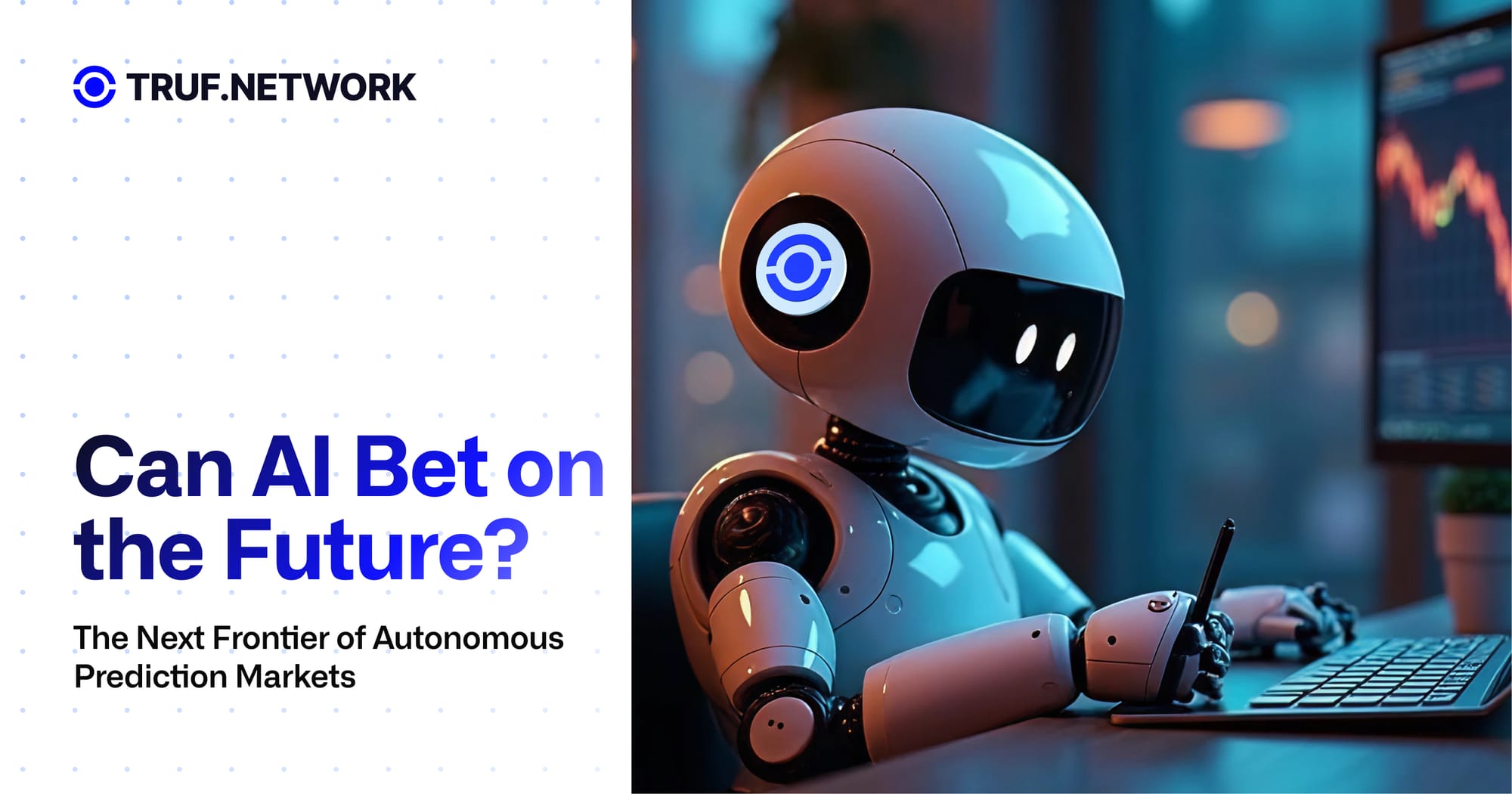Can AI Bet on the Future?
The Next Frontier of Autonomous Prediction Markets

Day 68 of 100 Days of TRUF
When agents are doing the trading, who keeps score?
“Sathvik” typed a sentence into his AI assistant:
“Use $500, research ETFs, and buy the best performers today.”
That’s it. No ticker symbols. No chart analysis. No broker. Just a prompt.
AI took over.
It opened his browser, navigated to Robinhood, pulled up tech and healthcare ETFs, submitted the trades, and executed. Live. On his real account.
No “Are you sure?”
No risk disclosures.
Just execution.
And just like that, a retail investor let an autonomous agent take the wheel, with real money, on a real exchange, using real-time data it pulled and trusted on its own.
It’s a flex. It’s a stunt. But it’s also the canary in the financial coal mine.
Because this isn’t about $500 and some ETFs.
This is about millions of AI agents making billions of decisions, without human hesitation, human emotion, or human oversight.
The Bots Are Already Trading
You may not have noticed, but trading is no longer just human vs. human.
- Climate DAOs reallocating capital based on satellite weather data
- Autonomous agents hedging bond positions based on hourly CPI
- Machine-run portfolios shifting strategies as economic indicators update in real time
The lines between algorithmic trading, AI execution, and full autonomy are blurring fast.
This is the new prediction market. And the bets are being placed by code.
While the specific Robinhood ETF anecdote hasn’t been independently verified, it reflects a very real capability. Tools like Perplexity Comet already let agents control browser tabs, navigate interfaces, autofill forms, and even submit transactions.
We’re not in the hypothetical phase anymore. The infrastructure exists.
The Hard Problem Isn’t Intelligence. It’s Truth.
The ETF-buying bot worked because it believed what it saw.
That’s the terrifying part.
When agents misinterpret, hallucinate, or get spoofed by bad inputs, they don’t pause.
They don’t double-check.They act.
At machine speed.With real money.
On infrastructure built for people.
When a phantom inflation spike triggers a DAO-wide liquidation, or a misreported GDP figure causes a token crash - who do you blame?
The browser plugin?
The data feed?
The user who typed “go”?
Nobody’s driving anymore. And everyone’s liable.
Autonomy Breaks the System
Every legal and financial rule we have assumes human intent.
But agents don’t have intent. They have logic.
They don’t mean to do anything. They just do it.
That ETF trade wasn’t a decision, it was an execution path.
And as the number of autonomous actors scales into the millions, we’re headed for a world where the market is constantly reacting to the data itself.
If the data’s wrong?
The whole system follows it off a cliff.
So Who Keeps Score?
This is the question: When machines bet on the future, who verifies the world they’re betting on?
It’s not about feeds.
It’s not about APIs.
It’s about trust - cryptographically enforced, transparently sourced, and publicly verifiable.
Agents need to know that the inflation number they’re reading is:
- Cross-checked from multiple sources
- Timestamped at the moment of publication
- Not tampered with or backfilled
- Immune to “oops” edits or political spin
They need reality with a receipt.
The Source of Truth
This is the future TRUF.NETWORK was built for.
Not to “provide data,” but to verify reality, at the machine layer.
To make sure that when agents act, they’re acting on something provably true.
No more “trusted sources.” Only trustless facts.
We’re not here to predict the future.
We’re here to sign it.
Verified by TRUF
The Source of Truth for Autonomous Markets.
